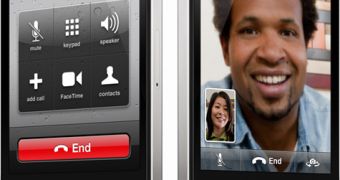Surgeons at Valley Presbyterian Hospital near Los Angeles and University of Arizona used Apple’s FaceTime technology to successfully collaborate long distance in “real time” on a wound consultation for a patient, a report states. The move has been labeled as one of the first known iPhone 4 “video calling” medical consultations since the smartphone’s release.
Apple heavily relies on FaceTime to promote its newly-introduced iPhone 4. Softpedia reported earlier that four new iPhone 4 TV ads had started airing, all of which promote FaceTime, the video-chatting function made possible by a second, front-facing camera placed at the phone’s screen. FaceTime works only on Wi-Fi networks for now, and is natively supported between iPhone 4 devices alone.
Using FaceTime, Dr. David G. Armstrong, Professor of Surgery at the University of Arizona's Southern Arizona Limb Salvage Alliance (SALSA), was reportedly able to connect with Dr. Lee Rogers, Associate Director of Valley Presbyterian Hospital’s Amputation Prevention Center, near Los Angeles, turning a simple phone call into a long distance consultation and second opinion for a patient who recently underwent surgery, the report says.
Valley Presbyterian Hospital’s Amputation Prevention Center claims that using Apple’s iPhone 4 in patient-related matters is just one of many recent actions involving cutting-edge technologies employed by the hospital to help surgeons achieve the best results possible.
“Video consultation over the Internet has been available for a few years, but its utility in the clinical setting has been limited by the necessity of having a transportable computer, camera, and appropriate software,” said Dr. Rogers. “Now, nearly everyone carries a phone in their pocket. It is this compact accessibility that will lead to the adoption of this technology for medical consultations.”
“While the University of Arizona has had one of the world's top tele-health systems, the ability to communicate quickly with something that is an afterthought has the potential to alter how we work with our colleagues and patients,” said Dr. Armstrong.
“Just as with the iPod in music and the laptop in computing, it is not the change in technology, but the change in form factor and ubiquity that alters this landscape."

 14 DAY TRIAL //
14 DAY TRIAL //